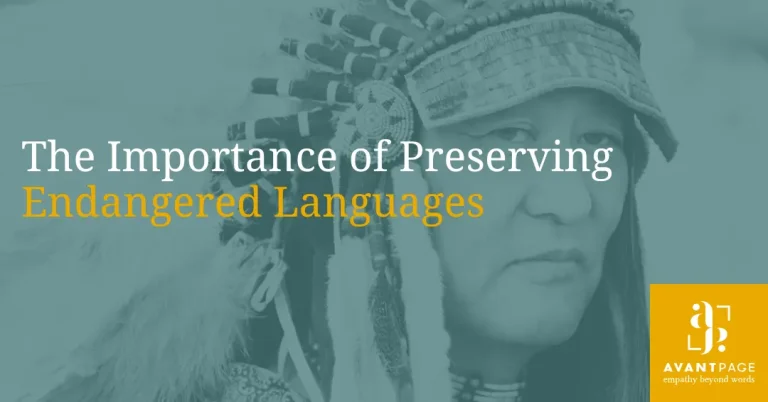What Is the Difference Between a Translator and an Interpreter?
Language Service Providers (LSPs) offer a wide variety of services, with interpretation and translation being two of the most frequently requested language services. While they share a common goal, the difference between translators and interpreters matter significantly in execution, skillset, and application.
In this guide, we’ll walk through the difference between interpretation and translation, how to understand which service is needed for your project at hand,and why both matter in industries like healthcare, government, and legal proceedings.
How to Differentiate Between Interpretation and Translation
When people hear the words “translator” and “interpreter,” they often assume the two roles are interchangeable — but they serve very different functions. Understanding the difference between a translator and an interpreter is especially important in fields like healthcare, law, education, and government, where communication accuracy can impact lives, rights, and outcomes.
The main difference between a translator and interpreter lies in the medium and timing of the communication:
| Translator | Interpreter | |
| Mode | Written language | Spoken or signed language |
| Timing | Works after communication occurs (delayed) | Works in real-time (live) |
| Tools | CAT tools, glossaries, translation memory | Headsets, remote platforms, consecutive/simultaneous methods |
| Use Cases | Documents, forms, signage, legal filings | Medical appointments, court hearings, live events |
| Turnaround | Can take hours to days depending on volume | Immediate or near-instantaneous |
| Required Skills | Writing accuracy, subject matter expertise | Listening, memory, verbal fluency, cultural agility |
What Does an Interpreter Do?
Interpretation is informally defined as “the facilitation of spoken or signed language communication between users of different languages.” Interpretation uses a qualified and certified interpreter to transform verbal or signed language (the source language) into a different verbal or signed language (the target language). There are several major types of interpreting:
- Simultaneous interpreting. The interpreter keeps pace with what is said in the conversation and interprets into the target language as they are listening to the conversation. The goal of simultaneous interpreting is to convey exactly what is being said by the speaker/signer.
- Consecutive interpreting. The speaker/signer stops every few minutes, generally at the end of a paragraph, and allows the interpreter to provide what was signed or spoken in the target language.
- Over-the-phone interpretation (OPI). This form of interpretation can be done in either a simultaneous format or a consecutive format. The main difference between OPI and other forms of interpretation is that this form of interpretation is done via phone. You can schedule an OPI interpreter if you’re aware of when you will need one, or you can use on-demand OPI interpreters if you need immediate interpreting services.
- Video interpretation. This form of interpretation can also be done in either a simultaneous format or a consecutive format. Similarly to OPI interpretation, this isn’t done in person. Video interpretation is completed using a video call software that allows for the interpreter and others involved to be seen through video. This is ideal if you need an interpreter for a signed language but have no in-person interpreters available.
Interpreters must think on their feet, maintain confidentiality, and adapt to cultural nuance and tone in real-time. Explore interpreter services with Avantpage or learn about the differences between on-site interpreters vs. remote services.
Common examples of interpretation services:
- Interpreting during a doctor’s appointment with a Spanish-speaking patient
- Helping parents with LEP participate in an IEP meeting at school
- Supporting asylum seekers or immigrants during court hearings
- Assisting during emergency calls, city council meetings, or public events
What Does a Translator Do?
Translation is defined as “communication of the original meaning from one language (the source) to another language (the target). Translation refers to written information.” Translation is less about ensuring the exact words are translated and more about ensuring the original tone and intent of the original document are effectively translated into the target language. Translation is only used in written circumstances.
Certified translators are typically used when legal validity, regulatory compliance, or public accessibility is a concern. They often work with tools like translation memory or glossaries to ensure consistency. Discover translation services with Avantpage.
Common examples of translation services:
- Translating informed consent forms for hospitals
- Converting election ballots or voter materials into required languages
- Translating contracts, real estate documents, or birth certificates
- Translating government websites or immigration paperwork for non-English speakers
Do you need interpretation and translation?
Whether you need an interpreter vs. translator, or both is dependent on your organization’s language access goals. If you’re working with a language that doesn’t have a written equivalent, like sign language or certain Indigenous languages, you’ll need to work with an interpreter rather than a translator.
Interpretation and translation are both highly regulated for different industries as well, which affects what language services your organization needs. If you’re in the healthcare field, for example, you’ll need both interpreters and translators at your disposal. Elections also require similar accessibility to both interpreters and translators.
Use a translator when:
- You need to convert written documents into another language
- You’re distributing official notices, legal documents, or public communications
- Regulatory requirements (e.g., Title VI, ADA, ACA) mandate translated content
Use an interpreter when:
- You’re hosting a meeting, appointment, or event with multilingual participants
- There’s a need for real-time understanding across language barriers
- You're required by law to provide spoken language assistance in settings like hospitals or courts
Pro tip: Most organizations need both. For example, a school may translate report cards and policies, but also interpret during parent-teacher conferences.
Why The Difference Matters in Regulated Industries
In fields like healthcare, government, elections, legal services, and education, miscommunication can have serious consequences. Here’s why choosing the right service matters:
- Healthcare: Misunderstood medical advice can lead to misdiagnosis or non-compliance with treatment, which can cause adverse health outcomes..
- Legal: An inaccurate translation or misinterpreted testimony could affect due process, resulting in mistrials, wasted court finances, or sway legal outcomes.
- Education: Parents with LEP must be able to participate meaningfully in decisions about their children’s education.
- Government: Public-facing content must be linguistically and culturally accessible to all residents, as required by federal laws like Title VI of the Civil Rights Act.
Frequently Asked Questions About the Difference Between Translator and Interpreter
What is the key difference between a translator and interpreter?
The core difference is medium and timing: translators work with written language and interpreters work with spoken word or signed language, often in real time.
Can someone be both a translator and an interpreter?
Yes, but it’s rare. Each role requires different skillsets and certifications. Some professionals may be trained in both, but most specialize.
Is interpretation more expensive than translation?
It depends on the context. Interpretation is often charged by the hour or minute, while translation is charged by the word or page. Real-time, on the spot needs (like medical interpreters or courtroom services) may drive up cost for interpreters.
When is interpretation legally required?
Under laws like Title VI, ADA, and Section 1557 of the ACA, organizations receiving federal funds (like hospitals and schools) must provide interpreters for individuals with LEP.
Are remote interpretation services reliable?
Yes. Tools like OPI and VRI are effective, fast, and secure—especially when provided by vetted professionals trained in medical, legal, or educational terminology. Learn more about the differences between OPI vs. VRI interpretation services.
Why can’t we just use bilingual staff?
Being bilingual doesn’t equal being trained to facilitate an interpretation or translation. Professional interpreters and translators are skilled in terminology, ethics, cultural competence, and confidentiality.
Need Help With Interpretation or Translation?
Avantpage has provided professional interpretation and translation services for nearly 30 years, helping healthcare systems, school districts, election agencies, and government organizations deliver equitable access to multilingual communities.
Whether you need a certified legal translator, on-demand interpreter, or a full language access plan, we’re here to help.
Call us at (530) 750-2040 or request a free quote today.


